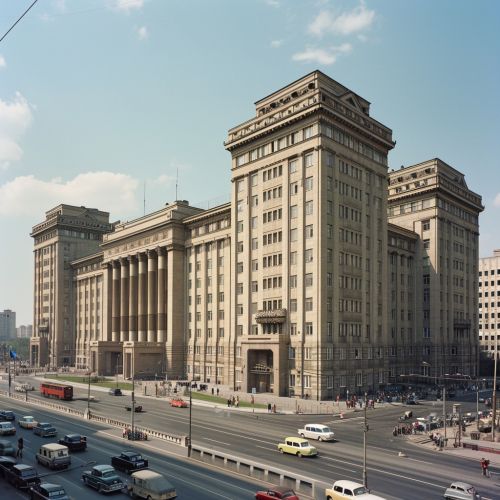Supreme Soviet of the USSR
Origins and Establishment
The Supreme Soviet of the USSR was the highest legislative body in the USSR and the only one with the power to pass constitutional amendments. It was established by the 1936 Constitution, also known as the Stalin Constitution, which was designed to give a democratic facade to the Soviet regime. The Supreme Soviet was a bicameral parliament, composed of two chambers, the Soviet of the Union and the Soviet of Nationalities.
Structure and Composition
The Supreme Soviet consisted of two chambers, the Soviet of the Union and the Soviet of Nationalities. Each republic of the USSR was represented in the Soviet of the Union by 32 deputies and in the Soviet of Nationalities by an equal number of deputies. The deputies were elected for a term of four years. The Supreme Soviet convened twice a year for ordinary sessions, each lasting several months. Extraordinary sessions could be called by the Presidium of the Supreme Soviet, the Council of Ministers, or deputies representing one-third of the constituencies.


Functions and Powers
The Supreme Soviet of the USSR was vested with great law-making powers. It had the authority to adopt and amend the Constitution, to determine the guidelines of domestic and foreign policy, to approve the budget, and to declare war and peace. The Supreme Soviet also elected the Presidium, formed the Council of Ministers, and appointed the Procurator General of the USSR.
Role in Soviet Politics
Despite its formal powers, the Supreme Soviet was not a place for genuine debate or opposition to the policies of the Communist Party. In practice, it was largely a rubber-stamp institution, approving decisions already made by the Party's top leadership. The Supreme Soviet's sessions were carefully choreographed events, and dissent from the official line was not tolerated.
Dissolution and Legacy
The Supreme Soviet was dissolved in 1991 following the dissolution of the Soviet Union. Its powers were assumed by the newly formed State Duma and Federation Council, the two chambers of the Federal Assembly of the Russian Federation. Despite its lack of real power, the Supreme Soviet was a symbol of Soviet statehood and sovereignty, and its legacy can still be seen in the parliamentary institutions of many post-Soviet states.
